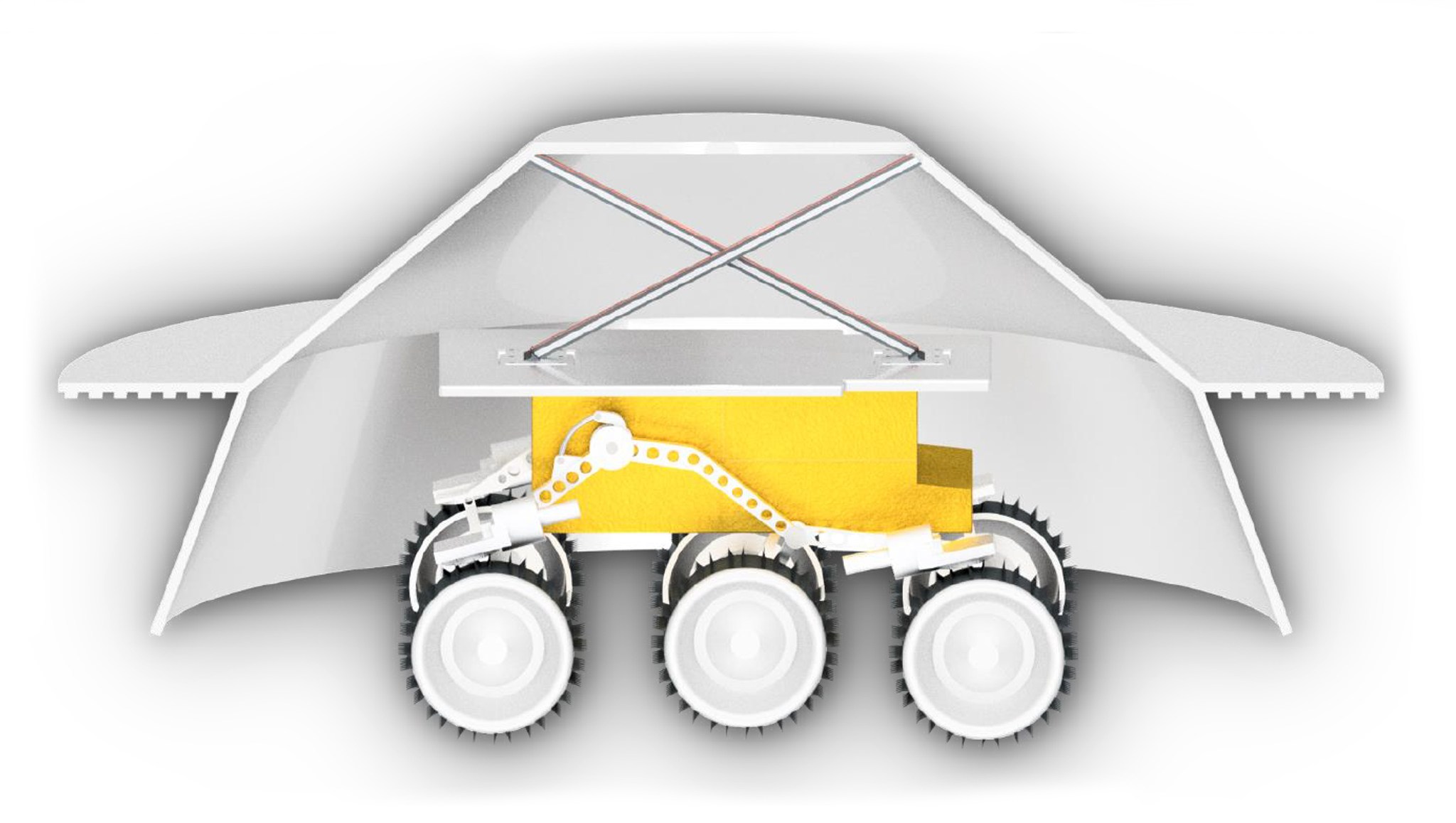Troy Howe
Howe Industries LLC

the shield are comprised of stacked POLAR coolers. The outer skirt of the shield includes arrays of thermoelectric generators
which absorb heat from the shield and radiate waste heat to the ground without heating the rover. Credits: Troy Howe
One issue that arises with spacecraft in almost every mission is thermal management. Computers, instruments, and housing may heat up in space, as a combination of solar energy and poor heat rejection causes temperatures to rise to hundreds of degrees. This can be fought by advanced radiators or may require specialized cooling systems. Naturally, these attempts to keep temperatures at operating levels result in excess mass and can prevent some more complex missions from even taking place. Peltier coolers are solid state cooling devices which utilize the Seebeck effect to create a temperature differential using electrical power. The proposed idea is an advanced Peltier cooler which is greatly enhanced by embedding a small amount of alpha emitting radioisotope in the feet of the device to ionize atoms and increase electrical conductivity. This allows for a drastic increase in the capabilities of existing thermal management technologies. The mission proposed is to create a rover which uses the POLAR cooler and a tungsten shield to allow for exploration of Mercury during the day in full sunlight. The augmented shield, called the High Irradiance Peltier Operated Tungsten Exo-Reflector (HIPOWER) shield, will protect the rover through a combination of reflectivity and thermal management. Initial modeling in COMSOL predicts that for an irradiance of 10,000 W/m2 the temperature of the rover can be maintained at ~300K using the POLAR coolers. This concept will be evaluated through the following three objectives: 1) Computationally model the POLAR unit – Using COMSOL multiphysics finite element modeling program, a database will be constructed to predict performance for a number of different materials under different circumstances. Aspects such as temperature difference, cold and hot side operating temperatures, power and volume requirements, and augmentation levels will be analyzed to identify which designs are most suitable for each application. 2) Testing in a radiation field – A functioning Peltier cooler will be constructed and inserted into the test reactor at Kansas State University. Boron will be used as a replacement for the alpha source, as it generates alphas when exposed to thermal neutrons. This will empirically demonstrate the change in performance while limiting costs and exposure to radioisotopes. 3) Rover design – Howe Industries will design a rover capable of monitoring the surface of Mercury, gather scientific data using on board instruments, and remain within operating temperatures. The equipment list for scientific information will be populated, as well as thermal, power, and communications systems. This mission will not only gather important information about the planet closest to the sun but will unequivocally demonstrate that thermal management technology has progressed to the point where even the most extreme thermal environments can be explored. The development of this cooling system is applicable to a number of missions as well as for keeping computer components cool in space, keeping propellant cryogenic for long periods of time, or producing liquid nitrogen for other applications. The POLAR cooler will solve the issue of thermal management in space by providing cooling in a small, robust, solid state package.






























